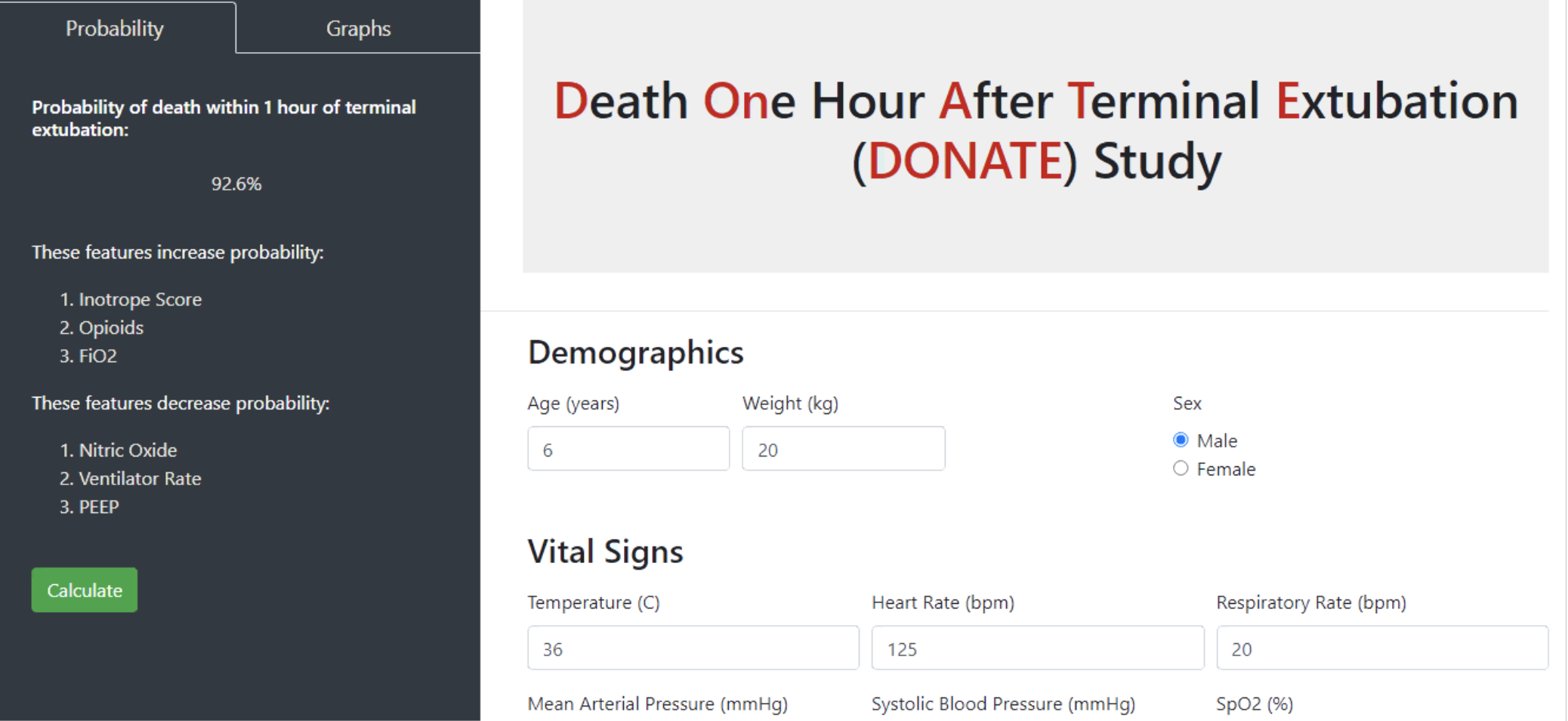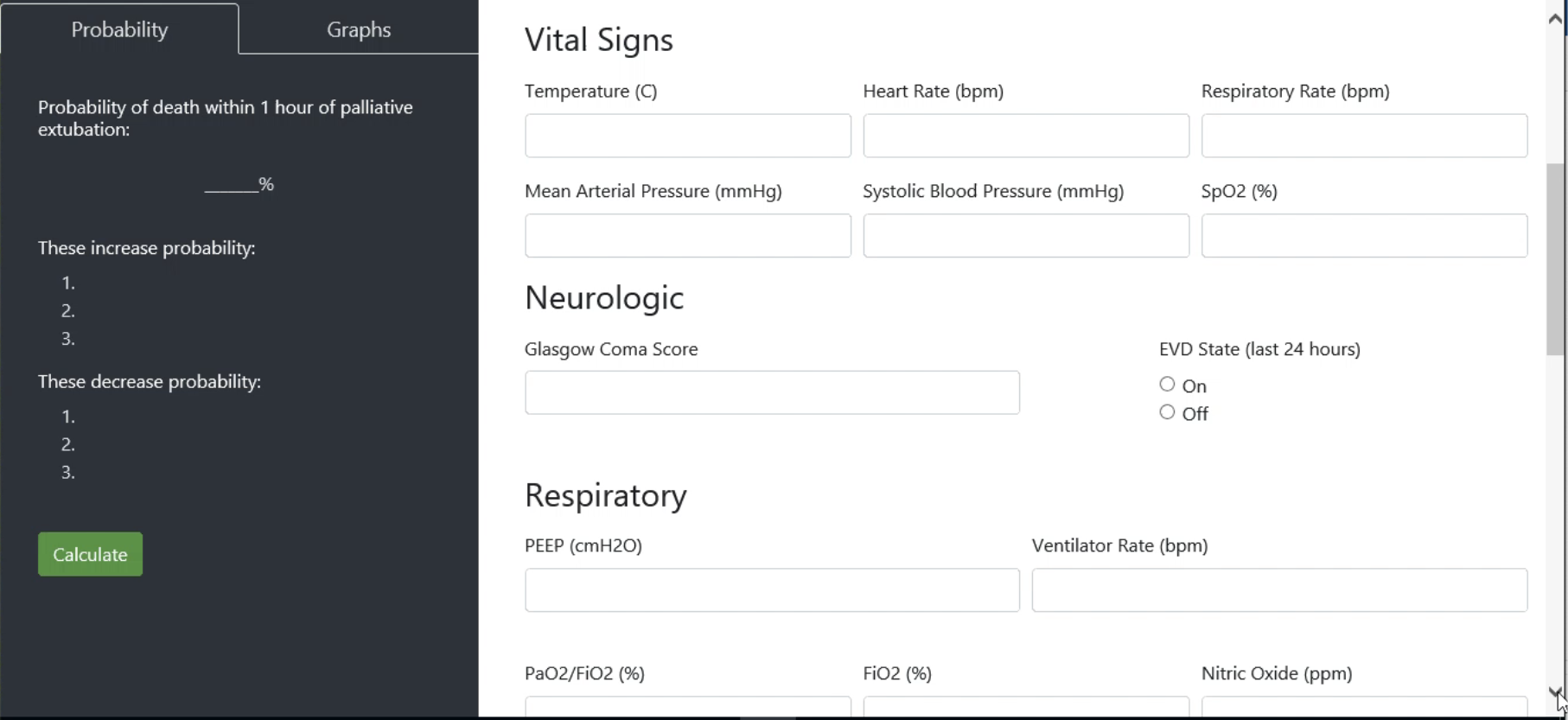DONATE Web Application - Made with Flask (HTML, CSS, Python)
I was the primary data scientist for developing the DONATE model and helped create the DONATE web application. This tool predicts the probability of death within 1 hour after terminal extubation. It allows a clinician to enter information about the patient and highlights high-impact variables that increase or decrease this probability.
One hour was chosen because:- It best facilitates family planning. More deaths happen within 1 hour than not, and the tool allows family to know if they have time to leave the bedside.
- Patients who die within one hour are eligible for organ donation, wheras those who die later are typically not. One hour is the ischemic time recommended by United Network for Organ Sharing (UNOS). It is also the most common time period institutions use if they practice organ donation after circulatory death.


